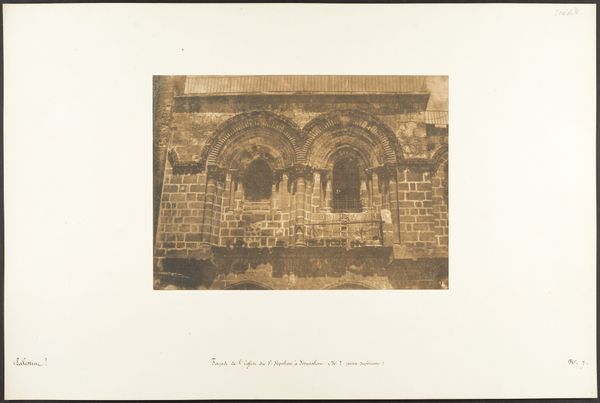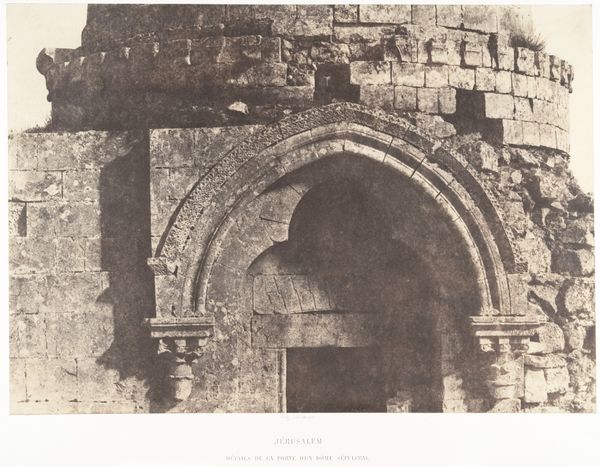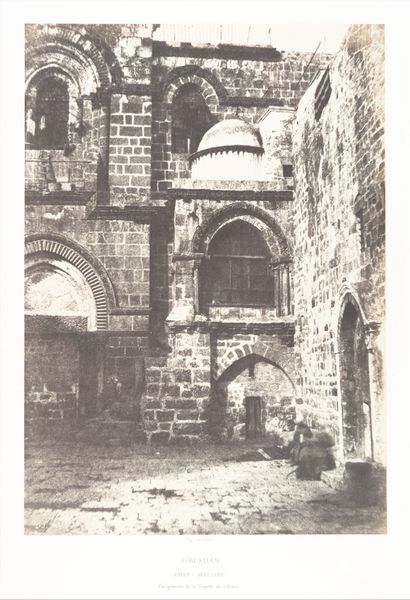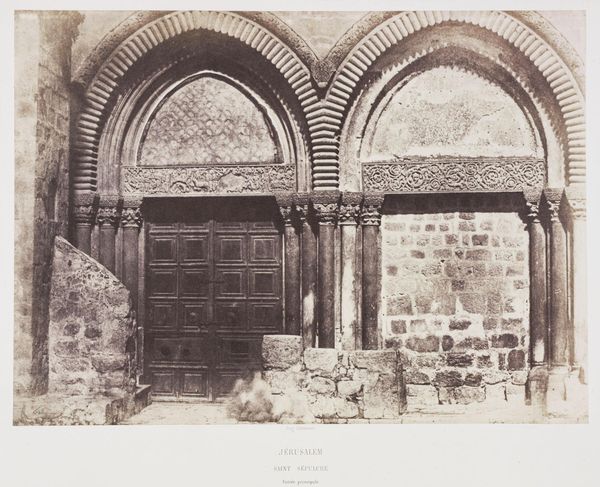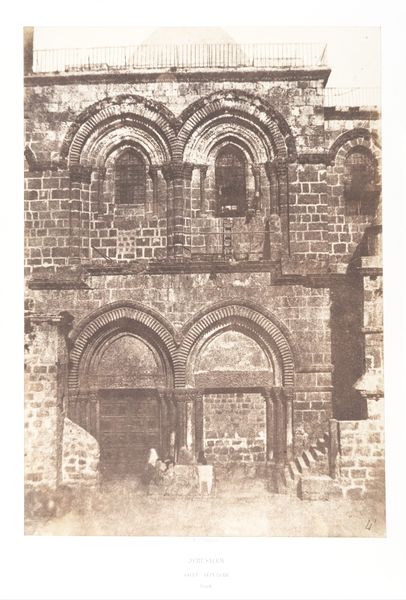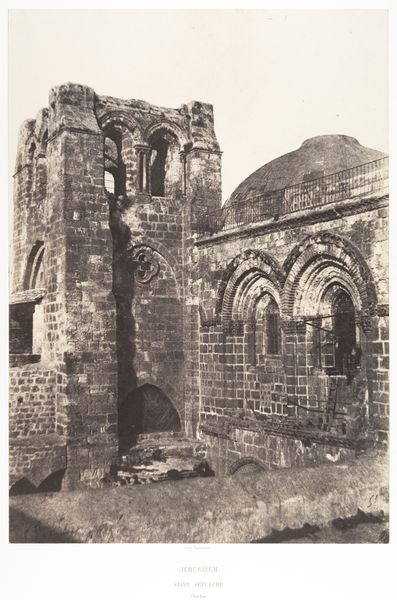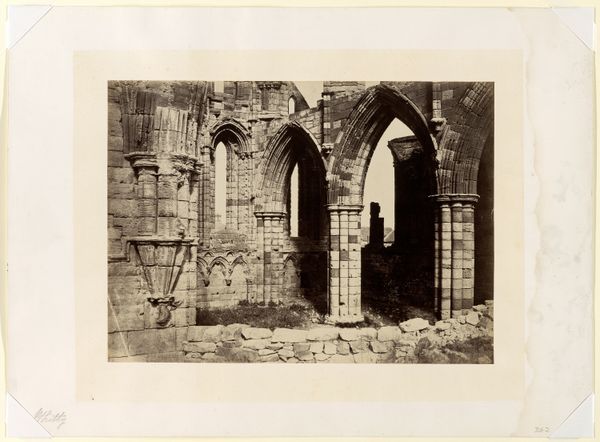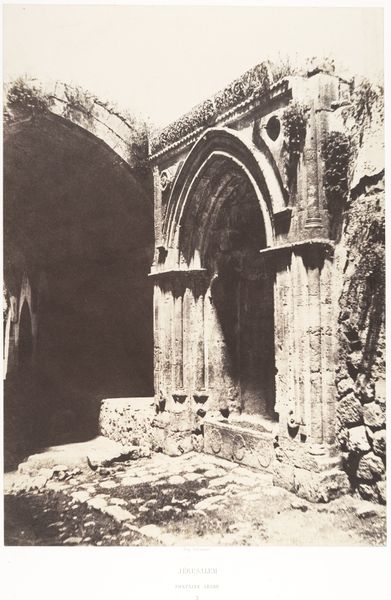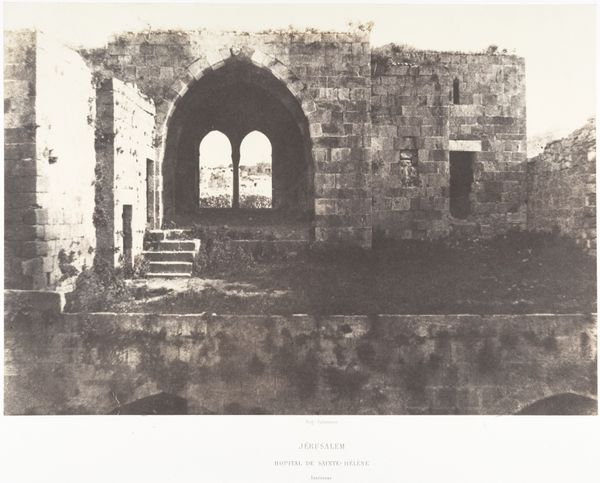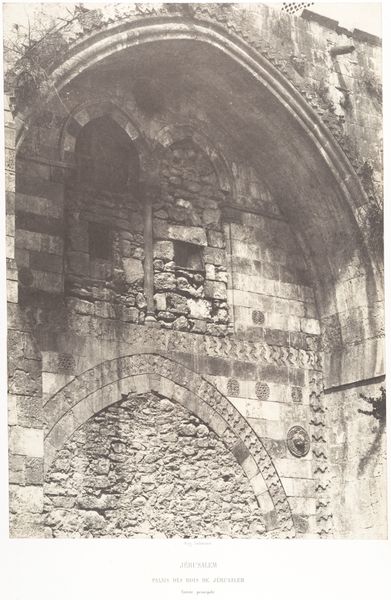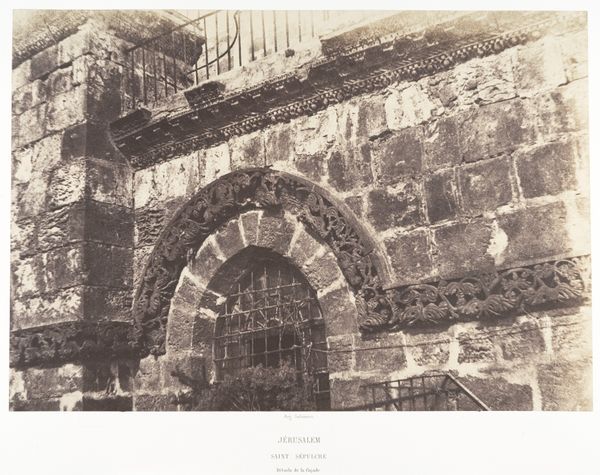
Jérusalem, Saint-Sépulcre, Partie supérieure de la façade 1854 - 1859
0:00
0:00
print, daguerreotype, photography, architecture
# print
#
daguerreotype
#
photography
#
ancient-mediterranean
#
architecture
Dimensions: Image: 23.4 x 32.9 cm (9 3/16 x 12 15/16 in.) Mount: 44.6 x 60 cm (17 9/16 x 23 5/8 in.)
Copyright: Public Domain
Auguste Salzmann made this photograph of the Church of the Holy Sepulchre in Jerusalem using the salted paper process. This was part of a series commissioned in the mid-1850s to support French archaeological research. Salzmann's photographs were intended to document the historical accuracy of biblical sites. But we can view them in the context of French colonial interests in the region. The image highlights the church's Romanesque architecture, emphasizing the Western Christian presence in Jerusalem. The choice of the Holy Sepulchre, a site of pilgrimage and contention, underscores the complex politics embedded in religious and cultural heritage. Understanding this image requires considering the photographer’s background, the commission's purpose, and the broader historical context of European involvement in the Middle East. We can use resources from archives, historical societies, and academic publications. These kinds of research show how photography, seemingly objective, is shaped by cultural and institutional forces.
Comments
No comments
Be the first to comment and join the conversation on the ultimate creative platform.
